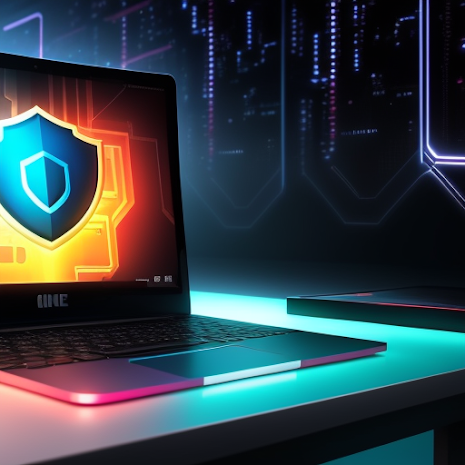The Ultimate Guide to Cybersecurity Best Practices: Securing Your Online Presence
Introduction:
In today's interconnected world, cybersecurity has become paramount. Protecting your online presence is essential to safeguard your personal information, financial assets, and digital privacy. In this comprehensive guide, we will explore a range of cybersecurity best practices that will empower you to enhance your online security and protect yourself from various cyber threats.
1. Create Strong and Unique Passwords:
Start by ensuring that all your online accounts are protected by strong, unique passwords. Avoid using easily guessable passwords such as "123456" or "password." Instead, create complex passwords comprising a combination of uppercase and lowercase letters, numbers, and special characters. Consider using a password manager to securely store and generate unique passwords for each account.
2. Enable Two-Factor Authentication (2FA):
Enable two-factor authentication whenever available. 2FA adds an extra layer of security by requiring a second verification step, such as a text message code, email confirmation, or a biometric factor. This additional layer helps prevent unauthorized access even if your password is compromised.
3. Keep Software and Devices Up to Date:
Regularly update your operating system, applications, and devices to ensure you have the latest security patches and bug fixes. Cybercriminals often exploit vulnerabilities in outdated software. Enable automatic updates whenever possible, as they streamline the process and reduce the risk of overlooking critical updates.
4. Be Wary of Phishing Attempts:
Phishing attacks are a common method used by cybercriminals to trick individuals into revealing sensitive information. Be cautious of suspicious emails, messages, or links, especially those requesting personal information or financial details. Avoid clicking on unknown links or downloading attachments from untrusted sources. Verify the legitimacy of emails or messages before providing any information.
5. Secure Your Wi-Fi Network:
Ensure your home Wi-Fi network is secure by using a strong password and encryption. Change the default network name (SSID) and the administrative credentials of your router. Enable WPA2 or WPA3 encryption protocols for enhanced network security. Additionally, disable remote management and regularly update your router firmware to protect against known vulnerabilities.
6. Use Antivirus and Anti-Malware Software:
Install reputable antivirus and anti-malware software on your devices. These programs provide real-time scanning, blocking and removing malware, and detecting potential threats. Keep your security software up to date to ensure it can effectively combat the latest threats.
7. Regularly Back Up Your Data:
Frequent data backups are crucial for mitigating the impact of data loss due to cyber attacks or hardware failures. Regularly back up important files and ensure the backups are stored securely, preferably offline or in encrypted cloud storage. In the event of a ransomware attack, having recent backups can help you restore your data without paying the ransom.
8. Practice Safe Browsing Habits:
Exercise caution while browsing the internet. Only visit reputable websites and avoid clicking on suspicious ads or pop-ups. Be mindful of the information you share online and limit the personal details you disclose on social media platforms. Use a reliable web browser with built-in security features and consider using browser extensions that block malicious websites.
9. Educate Yourself and Stay Informed:
Stay updated on the latest cybersecurity threats and best practices. Educate yourself about common attack techniques such as social engineering, phishing, and malware distribution. Follow reputable cybersecurity blogs, news sources, and industry experts to stay informed about emerging threats and recommended security practices.
10. Regularly Monitor and Review Your Accounts:
Regularly review your online accounts and financial statements for any suspicious activity. Enable email or text alerts for account logins, transactions, or changes in account settings. Promptly report any unauthorized activity to the relevant service providers or financial institutions.
Conclusion:
Implementing these cybersecurity best practices will significantly enhance your online security and protect your digital assets. By creating strong passwords, enabling two-factor authentication, keeping software up to date, being vigilant against phishing attempts, securing your Wi-Fi network, using reliable security software, regularly backing up your data, practicing safe browsing habits, educating yourself, and monitoring your accounts, you can fortify your online presence and minimize the risk of falling victim to cyber threats. Remember, cybersecurity is an ongoing effort, so stay proactive and adapt to evolving risks to maintain robust protection in the digital realm.



Post a Comment